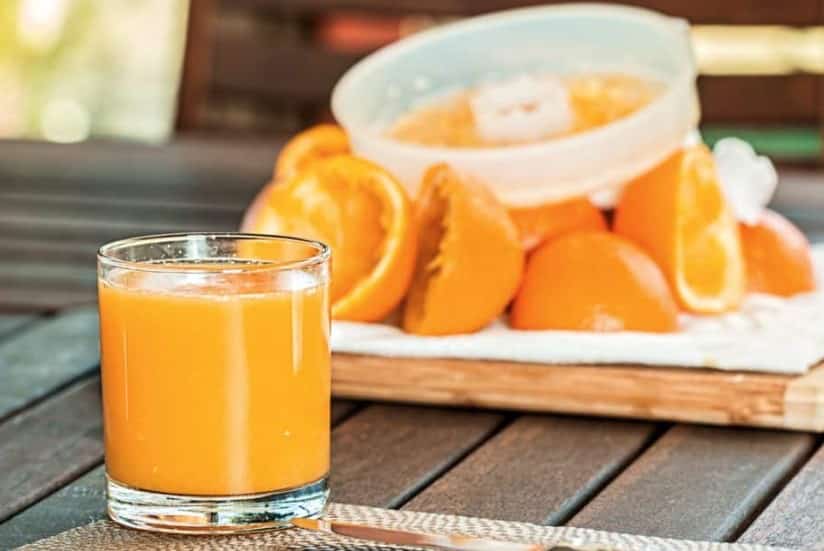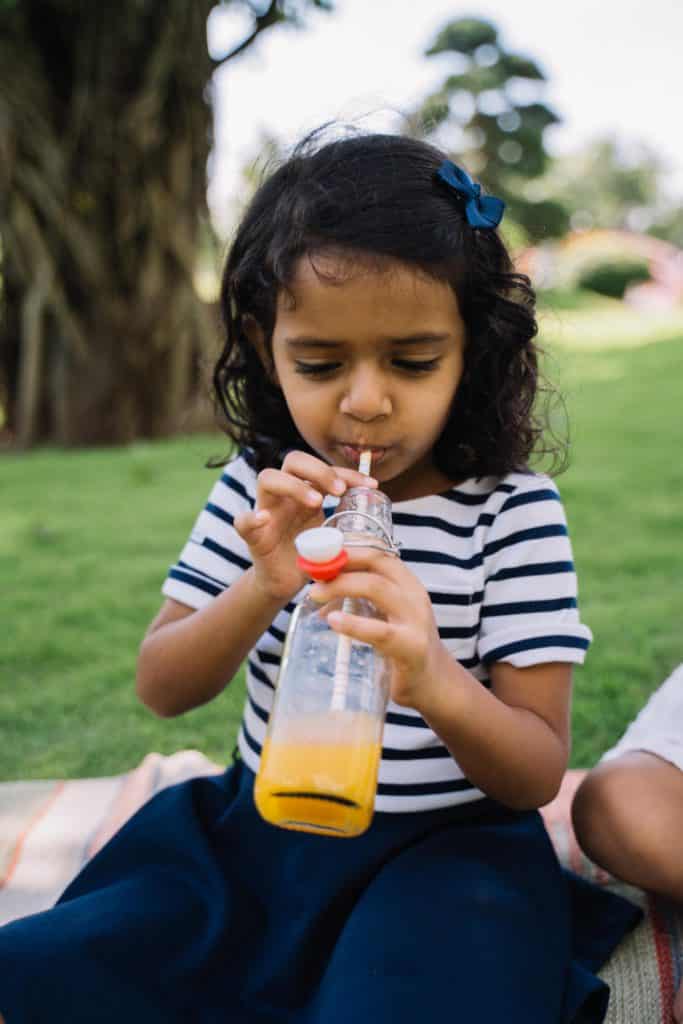As your baby grows, he/she would become more interested in trying out new meals and drinks (including fruit juice). Of course, there are a lot of firsts associated with babies. For some, the desire comes much earlier than you can imagine. In other cases, the apparent lack of interest can be disturbing.

Whatever the case may be with your baby, be sure you are available to provide as much help and support as usual. As usual, we’re here to lend a helping hand.
We understand that the decision on when to introduce solids and drinks to your little one can be quite tasking, especially if he/she is making the demands. Thankfully, there are a number of healthy and easy options available to you both.
This article provides you with the age recommendation for juice intake for babies, how to serve your baby juice, the types of juice you can give to your baby, few tips on serving your baby with juice and more.
Read on to find out.
When’s The Right Age To Start Juice?
According to the American Academy of Pediatrics (AAP), babies should not take juice until they’re more than one year old. However, your baby is exempted from this rule if your doctor recommends it for constipation treatment.

How To Serve Your Baby Juice
Firstly, don’t serve your baby juice from a bottle, serve with a cup. Secondly, juice is best for children who are able to sit up and drink from a cup. Don’t allow your baby drink juice all day. The high sugar content in juice is not good for their developing teeth. Some juices can even be acidic, causing more damage.

The quantity of juice you give your child should not be high. It should be as low as less than 4 ounces per day. It is also good to serve your baby juice at mealtime; as it facilitates digestion and reduces tooth decay.
Healthy Fruit Juice Options For Your Baby
You’d agree with me that there are so many fruit juice options available at your neighborhood grocery store. As a result, making the best choice can be a real hassle.

That’s why you have us.
The first step to selecting the right fruit juice option begins with carefully reading the label. Here’s what you should look out for:
- 100% fruit content.
- Checkout other ingredients (even when the label read “100% real fruit.”) The best juice options are the ones with the shortest ingredients list. Also, ensure you’re familiar with most, if not all of the stated ingredients.
- 100% pasteurized.
- No added sugar.
- Go for mild flavors (Apple or pear are okay for a start).
- Avoid options with labels such as “beverage,” “cocktail,” “drink,” or whatever ends with the suffix “-ade.”
Tips For Introducing Fruit Juice
The following tips would ensure that the process of introducing fruit juice to your baby is safe, healthy & effective:
- Serve juice at mealtime, and ensure that your child is sitting up.
- Use cups, not bottles to avoid spillage.
- Serve juice with the right kind of cups. The best kind of cups to use are open cups.
- Juice should be taken in a single sitting; make sure he/she doesn’t run around with a cup of juice in hand.
- Water down the juice. To avoid your baby getting overwhelmed with the flavor and taste of the juice, it’s best to water the taste of the juice down with water. You can reduce the quantity of water as he/she grows and is able to accommodate stronger juice flavors. This also helps to reduce the sugar, calories and acid naturally found in fruit juice.
Can It Treat Constipation?
Yes.

If your baby is having constipation, serving prune juice can help, especially if he/she is over a year old. Although prune juice also works for younger babies, it is best to check in with your pediatrician before making that choice.
Your doctor will help to decide if juices are good for your child at that age and also direct on the quantity of juice to be administered and how much of it should be given.
Does Fruit Juice Have Any Disadvantage?
Although they look quite similar, fruit drinks aren’t as healthy as actual fruits. Too much juice in your baby’s diet can lead to excess weight, reduced appetite for nutritious foods & diaper rash which is usually caused by citrus fruit.
Final words
Babies can actually survive and grow well without juice. However, if you’d like to introduce juice to your baby, keep it less than a cup per day. Although you can offer as much as two to three servings of actual fruits daily.
References
Barbara A Dennison (1996). Fruit juice consumption by infants and children: a review. Journal of the American College of Nutrition. Accessed on 5th March, 2021 from https://www.researchgate.net/publication/14315133_Fruit_juice_consumption_by_infants_and_children_a_review
Melvin B. Heyman, Steven A. Abrams. (2017) Fruit Juice in Infants, Children, and Adolescents: Current Recommendations. Pediatrics Journal. Accessed on 5th March, 2021 from https://doi.org/10.1542/peds.2017-0967
Robert D. Murray (2019). 100% Fruit Juice in Child and Adolescent Dietary Patterns. Journal of the American College of Nutrition. Accessed on 5th March, 2021 from https://doi.org/10.1080/07315724.2019.1615013

